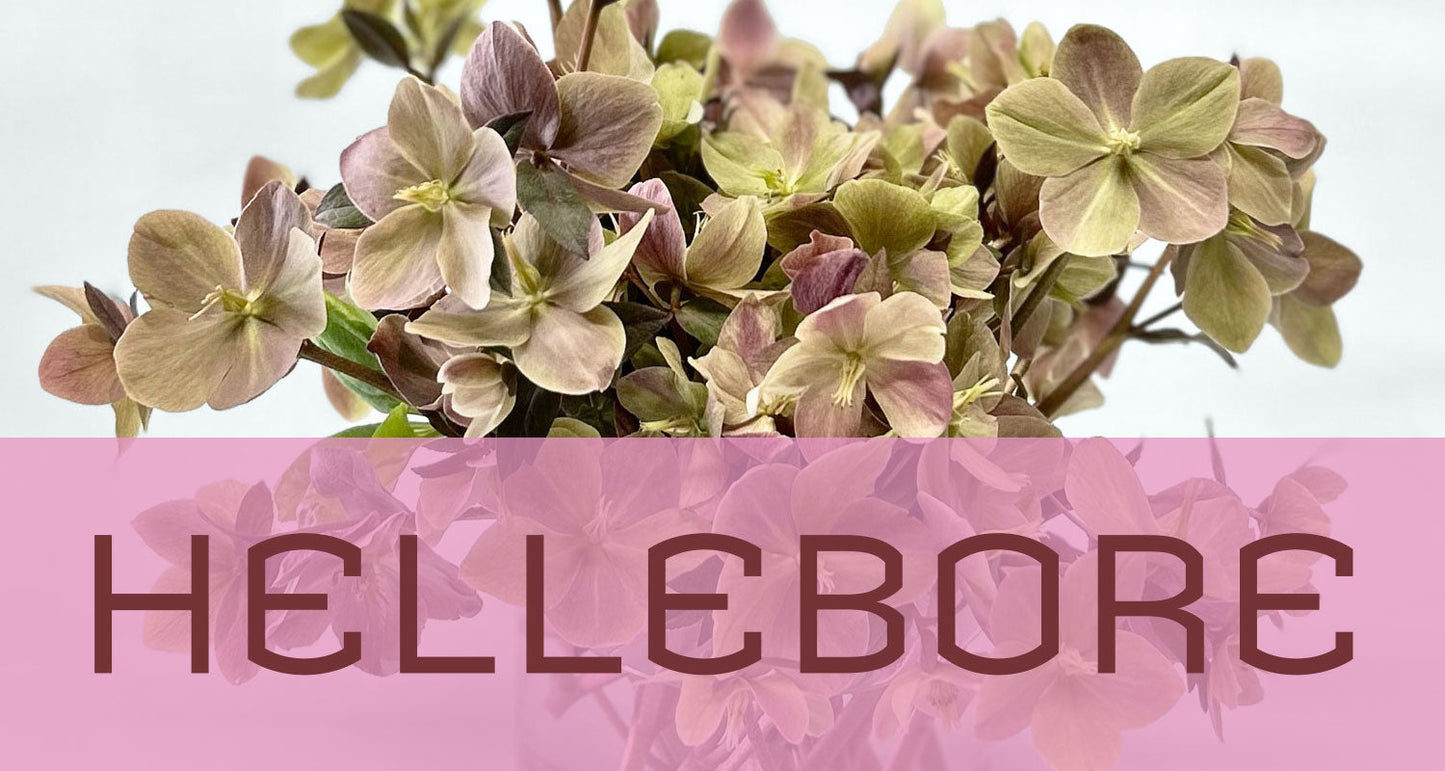
A distinctive bloom like the hellebore elevates a spring bouquet. With their intriguing cup-like flowers that gently droop, they add both charm and texture. I love pairing them with fritillaria, daffodils with their regal crowns, and other early blooms.
The nodding blooms of Helleborus orientalis remind me of their tiny cold-weather cousin, the snowdrop. Like snowdrops, hellebores are among the first to brighten gardens after a long winter. Their colours range from soft white and pink to rich purple and burgundy. Whether frilly, single, or double-petaled, their many stamens perform a delicate dance.
As a cut flower, hellebores can last up to two weeks. Keep in mind—they like it cold! Place your vase out of direct sunlight and, as always, change the water and re-snip the stems regularly. You may find the flowers harden off. Blooms like hellebores and hydrangeas often become more turgid and slightly dry to the touch over time. In my own bouquets at home, hellebores are often the last to fade.
It's worth noting that hellebores are toxic if ingested, and their sap can be irritating to some people. If you're handling them frequently, wearing gloves is a good idea. But don't overlook this darling bloom if no children or pets are at risk. If you're like me, you might just discover a new favourite spring flower!


